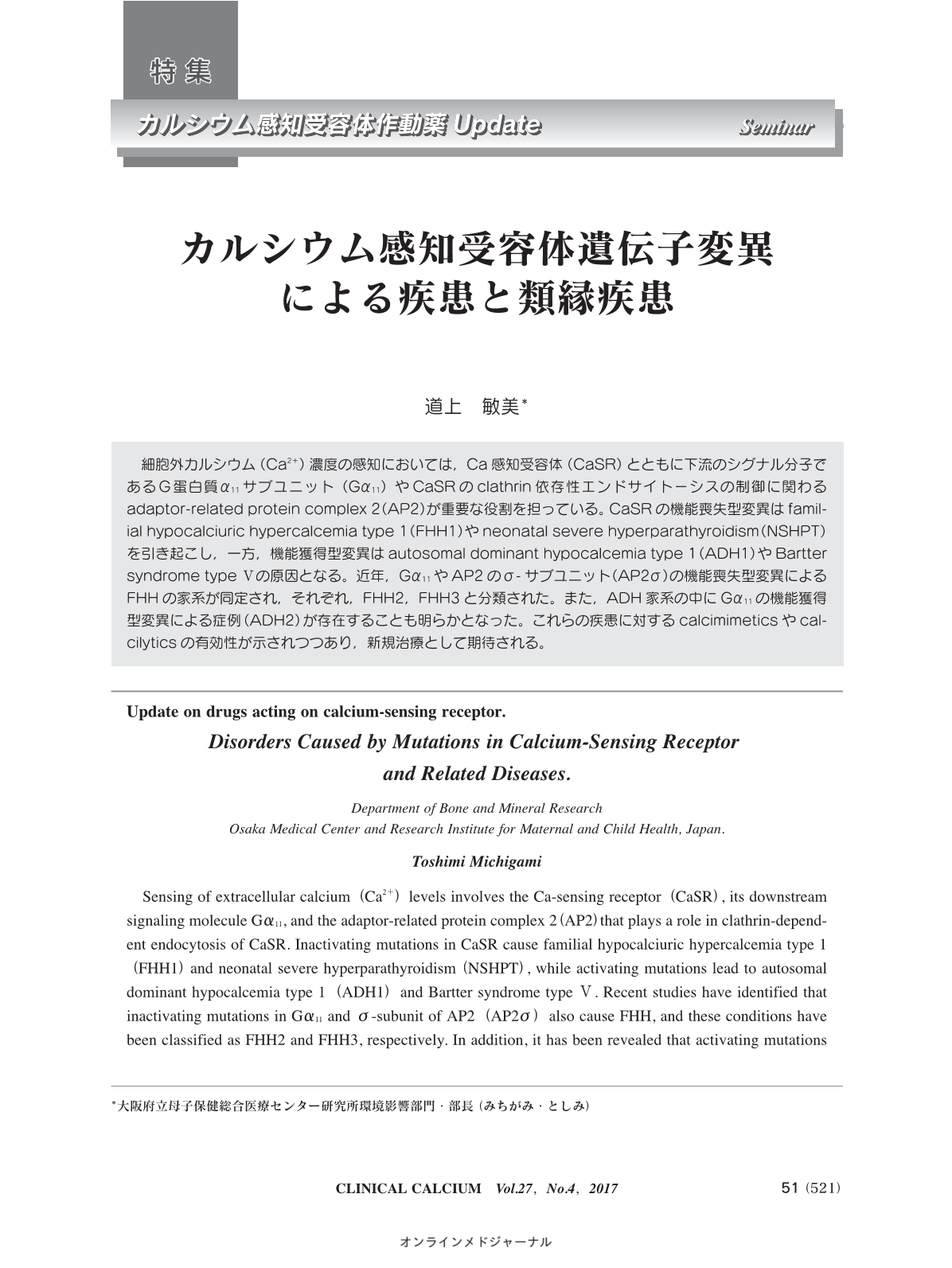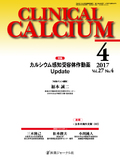Japanese
English
- 有料閲覧
- Abstract 文献概要
- 1ページ目 Look Inside
- 参考文献 Reference
細胞外カルシウム(Ca2+)濃度の感知においては,Ca感知受容体(CaSR)とともに下流のシグナル分子であるG蛋白質α11サブユニット(Gα11)やCaSRのclathrin依存性エンドサイトーシスの制御に関わるadaptor-related protein complex 2(AP2)が重要な役割を担っている。CaSRの機能喪失型変異はfamilial hypocalciuric hypercalcemia type 1(FHH1)やneonatal severe hyperparathyroidism(NSHPT)を引き起こし,一方,機能獲得型変異はautosomal dominant hypocalcemia type 1(ADH1)やBartter syndrome type Ⅴの原因となる。近年,Gα11やAP2のσ-サブユニット(AP2σ)の機能喪失型変異によるFHHの家系が同定され,それぞれ,FHH2,FHH3と分類された。また,ADH家系の中にGα11の機能獲得型変異による症例(ADH2)が存在することも明らかとなった。これらの疾患に対するcalcimimeticsやcalcilyticsの有効性が示されつつあり,新規治療として期待される。
Sensing of extracellular calcium(Ca2+)levels involves the Ca-sensing receptor(CaSR), its downstream signaling molecule Gα11, and the adaptor-related protein complex 2(AP2)that plays a role in clathrin-dependent endocytosis of CaSR. Inactivating mutations in CaSR cause familial hypocalciuric hypercalcemia type 1(FHH1)and neonatal severe hyperparathyroidism(NSHPT), while activating mutations lead to autosomal dominant hypocalcemia type 1(ADH1)and Bartter syndrome type Ⅴ. Recent studies have identified that inactivating mutations in Gα11 and σ-subunit of AP2(AP2σ)also cause FHH, and these conditions have been classified as FHH2 and FHH3, respectively. In addition, it has been revealed that activating mutations in Gα11 are responsible for ADH(ADH2). Calcimimetics and calcilytics may be beneficial in the treatment of these disorders.



